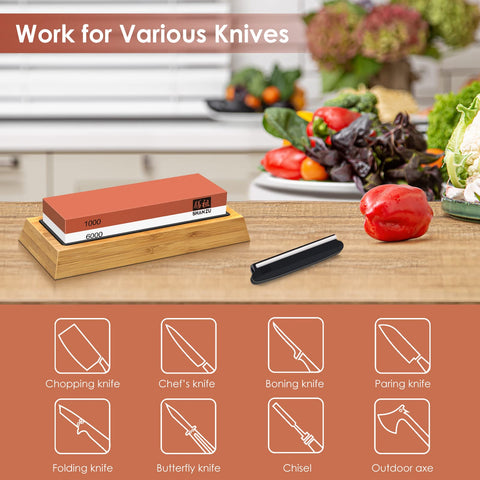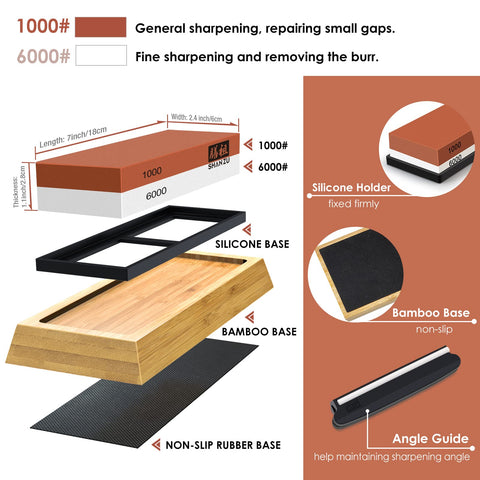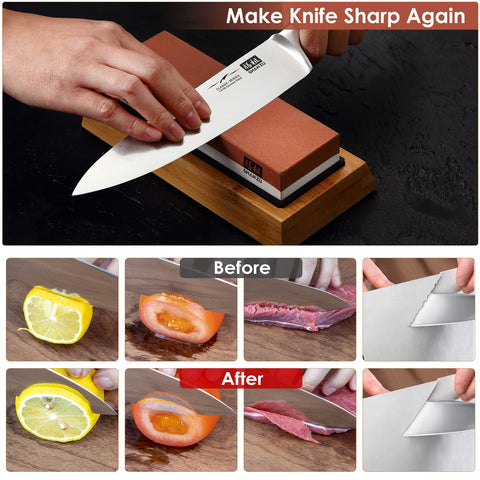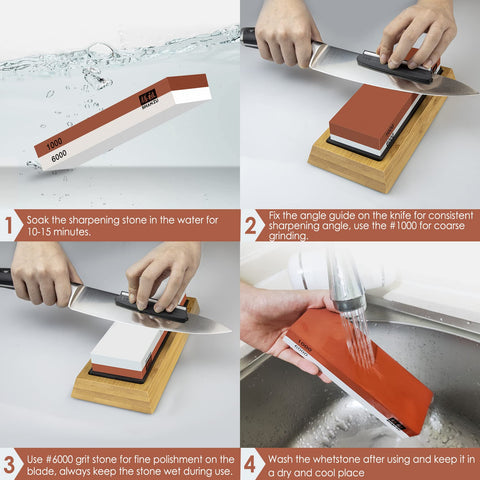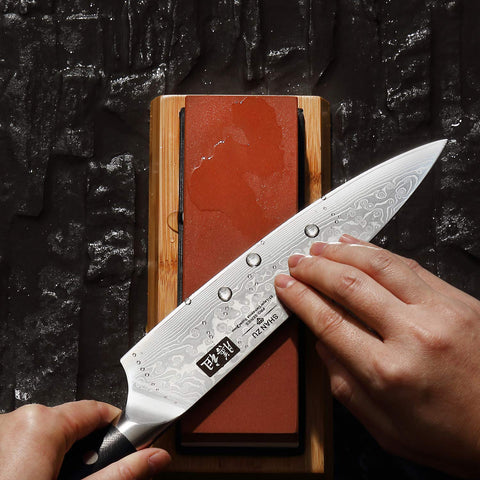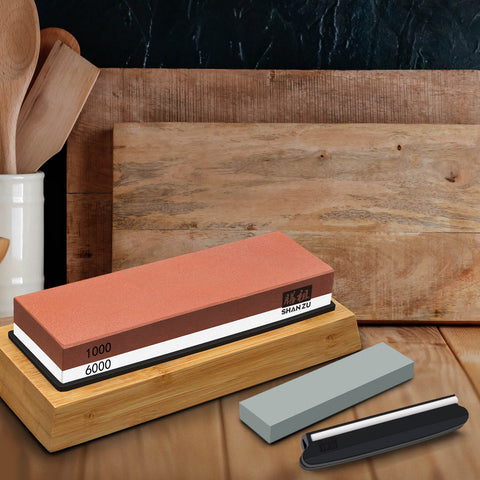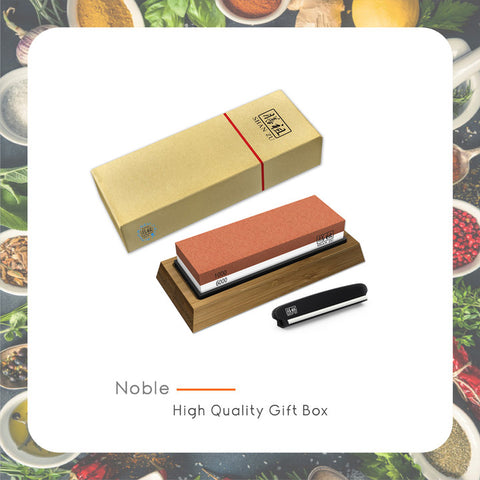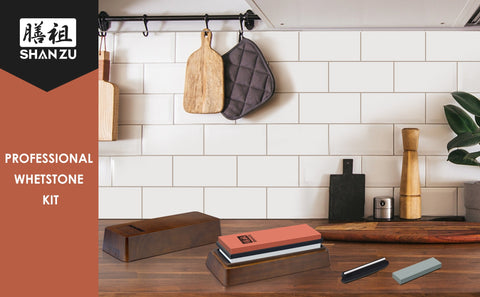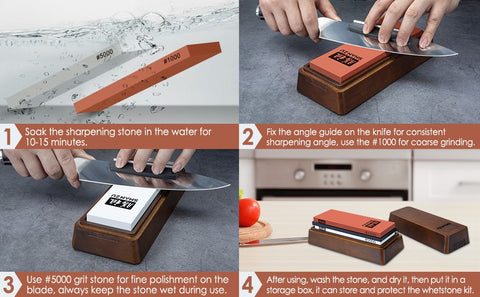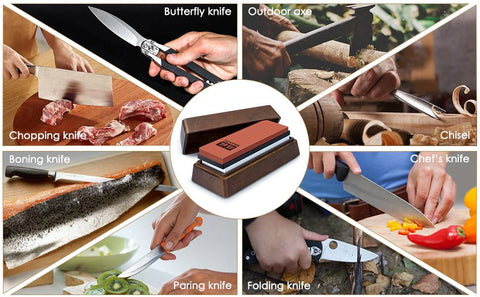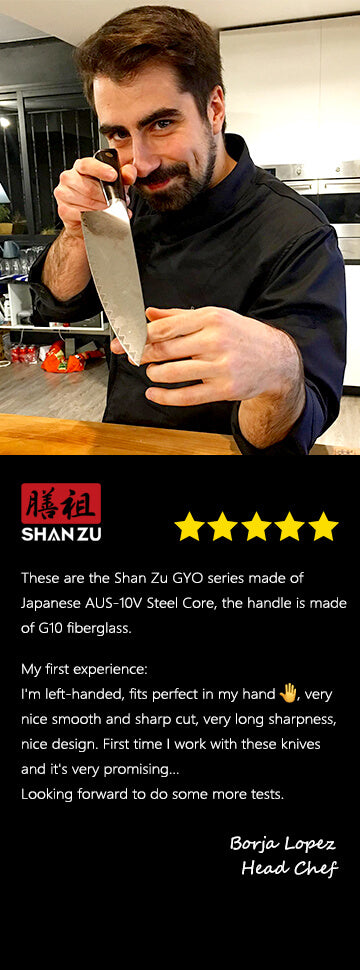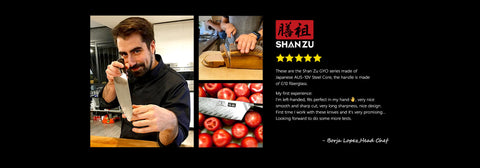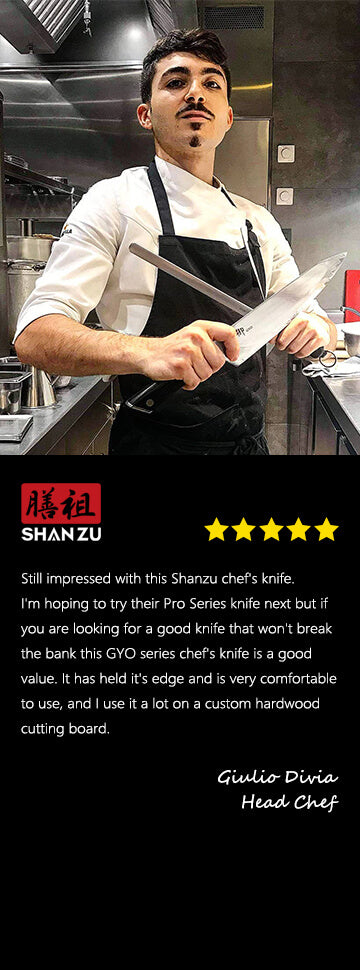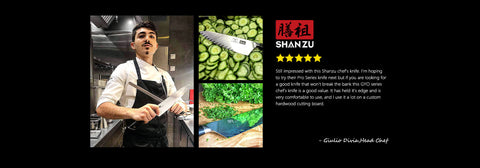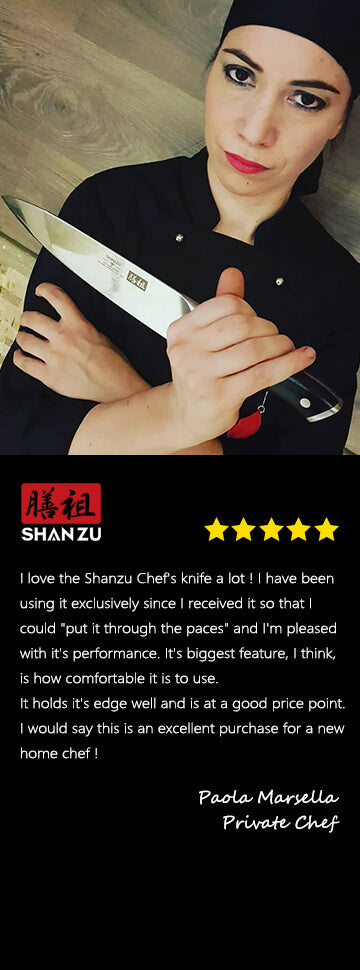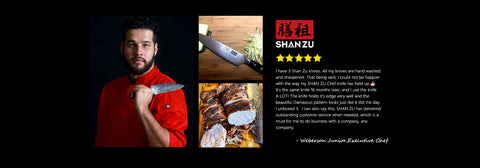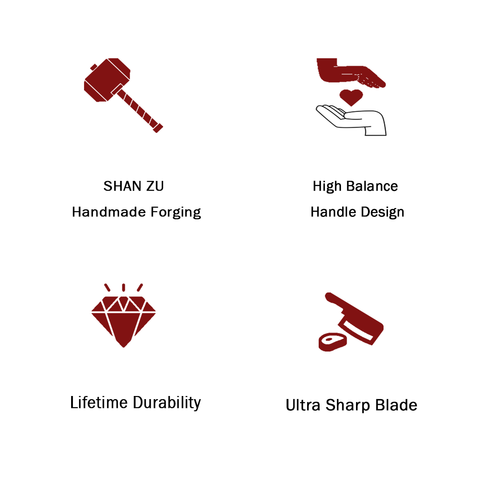A Child's Game to Master
Our whetstone kit is extremely beginner-friendly and easy to assemble.
Versatile Use
Sharpens fillet knives, sushi knives, pruning shears, straight razor blades, scissors, axes, hunting knives and much more.
L'avis de Nos Chefs Pros
Ne nous croyez pas sur parole, lisez ces témoignages!
Rejoignez le club exclusif SHAN ZU!
What matters most to you
Free standard delivery on all orders. Kitchen knife
*The following regions are excluded: United Kingdom, Ireland, Australia, Canada, Africa, Middle East.
Kitchen knife
*The following regions are excluded: United Kingdom, Ireland, Australia, Canada, Africa, Middle East.
Delivery time depends on the destination. In general, it takes between 3 and 14 days. International shipping is possible to most countries. If we cannot deliver to your country, we will contact you. Additionally, we will notify you of your order by sending you an "order confirmation" and a "shipping notification" after you have placed your order.
Returns are accepted for 30 days from the delivery date, in accordance with our refund policy. Just send us an email and we will tell you what to do.
SHANZU official email: shanzu@shanzuchef.com
To clean and maintain your knife, it is best to follow these steps: First, clean the blade with warm water and dish soap. Be sure to rinse and dry the blade well to prevent it from rusting. Next, use a sharpening steel to sharpen the blade.
Next, use a sharpening steel to sharpen the blade. This will maintain the sharpness and ensure that the knife is in good working order.
If the blade is very dirty or if food has stuck to it, you can use a soft bristle brush to clean it. clean it gently. After cleaning and sharpening the blade, apply a thin layer of oil to the blade and handle. After cleaning and sharpening the blade, apply a thin layer of oil to the blade and handle, in order to prevent rust and keep the knife in good condition. Finally, store the knife in a safe and dry place, away from heat and humidity. Finally, store the knife in a safe, dry place, away from heat and humidity. A knife block or knife drawer organizer is a good option, as it will protect the blade and prevent accidents.
To sharpen a knife, you will need a SHANZU whetstone or a knife sharpener. To use a sharpening stone, first soak the stone in water for about 10 minutes. Next, lay the knife flat on the stone and tilt the blade so that it forms a 10 to 15 degree angle with the stone. Using long, even strokes, move the blade across the stone in a back-and-forth motion, making sure to maintain the angle of the blade. After a few strokes, move the blade to the other side of the stone and repeat the process. You must sharpen the blade along its entire length and may need to repeat the process several times to achieve the desired sharpness level.
What is Damascus steel?
The origin of the name "Damascus steel" is controversial: two Islamic scholars, Al-Kindi and Al-Biruni (c. 800-873 CE), both wrote about swords and sword steels based on appearance, the geographic location of where they were produced or forged, or the name of the blacksmith. Both authors also mention the terms "damscene" or "damascus" when describing the swords to some extent.
Based on these references, there are three possible sources where the term "comes from" Damascus" in the context of steel:
Al-Kindi refers to swords forged in Damascus in Siberia as "Damascene", but it is important to note that these swords are not described as having a wavy appearance on the surface of the steel.Al-Biruni refers to a swordsmith called Damascus who made crucible steel swords.In Arabic, the word "damascus" means "watered", and Damascus blades are often described as having a water pattern on their surface.
The most common explanation is that the steel is named after the capital of Syria, Damascus, the largest of the ancient cities Levant. The most common explanation is that the steel is named after the capital of Syria, Damascus, the largest city in the ancient Levant. These may be swords made or sold directly in Damascus, or simply the appearance of the typical patterns, in comparison with damask fabrics, which also bear the name Damascus.
Qu is German steel?
German knives are usually made of stainless steel, which has a Rockwell rating between 56 and 58. Stainless steel contains chromium . This is what lowers the Rockwell index. The advantage is that the knife blade resists corrosion and rust.
Cooks generally agree that German-style stainless steel knife blades are stronger than German-style stainless steel blades. Japanese type. Cooks generally agree that German-style stainless steel knife blades are stronger than Japanese-style blades. Its durability allows you to use it for more cutting and chopping tasks.
The softer characteristic of steel still allows for a sharp edge, but stainless steel will require you to sharpen and trim it more often. The softer steel also makes the blade easier to sharpen, although a stainless steel blade means a German knife will lose its edge more quickly than its Japanese counterpart, which is made of high-carbon steel.



